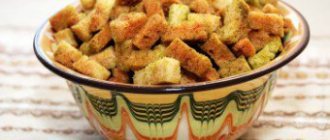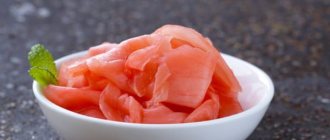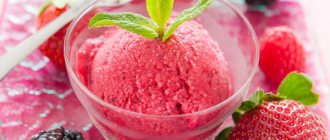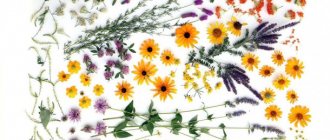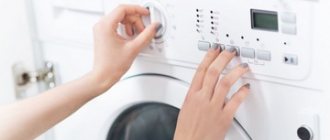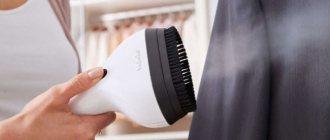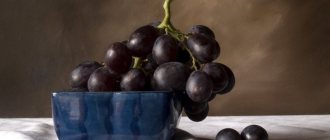To prevent unsightly kinks on an oilcloth tablecloth, it should be stored in a roll, but this is not always convenient. Only a tablecloth purchased or stored folded for a long time will always have creases on the fold. After spreading it on the table they will disappear, but after a while. This time depends on the type of product, its thickness and quality. If you don’t have the time or desire to wait, you can use some leveling tips.
Is it possible to iron a tablecloth with an iron?
You cannot iron oilcloth in the traditional way at normal temperatures. It is easy to get rid of creases - you will have to iron it in the most gentle mode with the lowest possible heating temperature. The iron should be warm, but not hot.
The procedure is as follows:
- First, a cotton piece of fabric is placed on the oilcloth surface. To be sure, lightly moisten the rag with water and wring it out well.
- Set the iron to the most gentle of the built-in modes.
- The work is carried out from the wrong side of the canvas. It quickly loses its original shade if you move along the front side.
- Pass over the tablecloth several times. The manufacturer does not recommend staying in one place for more than one second. You shouldn’t use force or put pressure on the iron - it’s easy to ruin the coating.
- After smoothing, the canvas is allowed to cool slightly.
Ironing is dangerous for thin oilcloth fabrics. It's best to store them in a way that will prevent jams.
Classic dishes: from appetizers to desserts
Classic dish recipes are the most popular among many people. Requests for them are especially relevant during the holidays. After all, it’s much easier and faster to cook something that has long proven itself well, tested and guaranteed to be delicious. New culinary innovations are also attractive, but people don’t always try them. At least they don’t risk cooking on holidays - so as not to inadvertently spoil either the food or the mood.
The five most commonly used ingredients in classic recipes are:
| Product | Calories kcal per 100g | Proteins g per 100g | Fats g per 100g | Carbohydrates g per 100g |
| 398 | 99.7 | |||
| 734 | 0.5 | 82.5 | 0.8 | |
| 157 | 12.7 | 10.9 | 0.7 | |
| 325 | 12 | 1 | 67 | |
| 33 | 1.3 | 0.1 | 6.9 |
Classics can be found everywhere: among drinks, alcoholic and non-alcoholic, among soups and borscht, main courses, all kinds of snacks, pastries, cakes, pastries, desserts. They are 100% likely to be in everyone’s recipe notebooks without exception. As a rule, all the ingredients in these are selected in ideal proportions to suit the tastes of the majority.
How to choose the right recipe?
To choose the right classic recipe, you should pay attention not only to its name, but also to the description, ingredients and, of course, step-by-step photos. You shouldn’t immediately happily grab the pots and ladle, but carefully read the text - yes
If you don’t have enough culinary experience, pay attention to comments, questions and answers, tips and similar recipes. Quite often the desired dish can be found in just such a section.
Five of the fastest classic recipes:
| Name of the dish | Cooking time | Calories kcal per 100g | User rating |
| 5 minutes | 506 | +259 | |
| 5 minutes | 212 | +43 | |
| 5 minutes | 689 | +33 | |
| 5 minutes | 70 | +18 | |
| 5 minutes | 22 | +32 |
Can products be replaced?
Some products can be easily replaced with others. But this does not always work and not everywhere. Especially when it comes to widespread ingredients like carrots, onions, and potatoes. If the recipe contains, say, hazel grouse (in the classic, real Olivier salad, the same one that is almost 200 years old), which you don’t see widely sold today, then it’s easier to give up on them and either choose another recipe, or take chicken. By the way, today hardly anyone knows the taste of that famous salad, since it contains the following products: two types of hazel grouse, veal tongue, pressed caviar, boiled crayfish, capers, lettuce, fresh cucumbers, soy paste. The only dishes we are familiar with today are boiled eggs and pickled pickles.
Is it possible to smooth out wrinkled oilcloth with steam?
Another way to get rid of aesthetic defects on a disposable tablecloth is long exposure to steam.
- Method one. The covering is kept over a pan of hot water. But boiling water will not work; it is too harmful for thin materials. The water should be around 50°C. Exposure to steam will cause the oilcloth to become damp. It is hung in a vertical position on clothespins, with medium-heavy weights attached to the lower edge.
- Method two. After exposure to steam from a container of heated water, the tablecloth is placed on a horizontal surface. Flat, heavy objects are placed in place of the creases. A stack of books, magazines, or a heavy box will do. After 2-3 hours, the wrinkles will smooth out.
The same methods can be carried out by replacing the steam pan with a steamer. After processing the oilcloth in a suspended position, leave it to dry or spread it on a smooth table.
Film gluing technologies and preparation for work ↑
Problems when gluing polyethylene are a fairly common situation. It's all about the characteristics of the material. Once you understand them, you can easily avoid difficulties.
What you need to remember from chemistry and physics ↑
Polyethylene is the most common polymer in the world. Its extraordinary popularity is explained by the excellent properties of the material - impact resistance, ductility, low gas and water permeability. Films reinforced with mesh or fabric are used for roofing, which increases the strength of the material.
Despite the advantages, polyethylene films are very rarely glued together in industry. To understand why connecting parts is problematic, just remember your school chemistry lessons. The molecule of this polymer is a long chain of similar -CH2- units. The charges inside such a molecule are distributed evenly, it is non-polar. And the higher the polarity, the more suitable the polymer is for gluing.
Connection methods without glue and solvent ↑
The method of gluing with its own solution, which is common for many polymers, is also not suitable - polyethylene is practically insoluble in organic solvents. The answer to the question: how to glue polyethylene film is actually very simple: it is best to use welding.
Of the many methods for welding polyethylene film, two are worth highlighting:
Both methods are equally effective, but in non-industrial conditions it is still easier and safer to use the first. However, everyone can choose the most suitable option for themselves, taking into account the availability of the necessary tools and their own skills. In any case, these methods make it possible to firmly connect parts together, creating reliable building elements, agricultural and protective structures.
Preparatory stages for work ↑
Popular wisdom says: “Measure seven times, cut once.” And before starting to work with polyethylene, you need to not only carefully take measurements, but also think through every detail. First of all, answer the questions:
Maybe after such questions the need to glue together many parts will disappear. For example, to insulate transported goods or preserve equipment, some parts of the plastic film can be secured with metal staples or twine. And to protect the building structure from moisture, it is recommended to overlap the polymer, covering individual parts.
Source
How to Level a Vinyl Tablecloth
Vinyl oilcloth looks stylish and successfully imitates fabric. When using it, it is difficult to wrinkle, but before the first use the material is usually wrinkled. To smooth it, use an iron and a cotton cloth soaked in water.
Vinyl coating does not withstand strong heat; you should not use the iron at maximum power or stay in one place for a long time. This may ruin the canvas.
By moistening the coating with warm water, get rid of creases and wrinkled places. Water is drawn into a spacious basin or bathtub and a tablecloth is lowered into it. The wet oilcloth is hung in a vertical position and waited until it dries.
Types of materials
Oilcloth can be purchased as a daily table cover or as a tablecloth only for special occasions. Products made from the following materials are popular.
Cotton. Attractive, colorful items with bright designs are most often purchased for use during a holiday dinner. This oilcloth makes the table look luxurious; in addition, the material is easy to wash and iron. The downside is that they wear out quickly. If you take a modern copy with polyester or viscose, then it will be easier to remove grease or wine stains from such a tablecloth.
Polyethylene tablecloth
A regular hairdryer will help get rid of creases on a transparent PVC sheet. This will take a long time, but the result is excellent:
- The material is laid out on a smooth, spacious surface.
- A simple hair dryer is set to medium power if there is a regulator. The air must be warm; cold air will have no effect.
- Holding the device at a distance of about 30 cm from the surface of the tablecloth, direct heat to the wrinkled areas.
- After a few minutes, the bumps will begin to disappear.
Do not use a hair dryer closer than the specified distance; do not set the maximum air flow on the device. These actions will lead to damage to the tablecloth.
The hairdryer method is suitable for thin coatings. The large thickness of the material will force the housewife to stand over it for a long time with a hairdryer.
To the one who puts a plastic bag on the fabric and irons it
Many of us have plastic bags stuffed with other plastic bags hidden in our closets. Consider reusing them and it will be fantastic.
The brightest ideas can be brought to life with the help of colorful bags. They can turn into something really special.
Cut out a template or motif from a plastic bag.
Arrange the motif on your chosen fabric. Cover the area with parchment. Now iron. The heat will cause the design to heat up and it will stick to the fibers of the fabric. Then remove the parchment slowly and carefully so as not to damage the decal. Textile design has never been easier and it's inexpensive! Don't mess around with fabric dye. Try to bring this idea to life. You choose the shape, size and design yourself. Your collection of plastic bags can bring your fantasy to life!
Shall we turn on some music to set the mood?
Silicone tablecloth
Before use, the silicone material must be “glued” to the surface of the table, it will smooth out on its own. Apply water from a spray bottle to the cover and to the table, and carefully spread the tablecloth. Silicone does not slip on the surface of the tabletop; just lay it flat and press it with your palms. Remains of water are removed with a dry cloth.
This type of fabric can also be ironed with an iron at minimum heat, spraying water first. Small thickness - use a hair dryer.
The method with hanging and weights is not suitable; the material can be deformed irrevocably. It is also impossible to straighten the canvas with steam, as it risks stretching.
General information
The oilcloth for the table is made from laminated protective transparent PVC film. Production - South Korea.
The product has a shiny laminated surface and reliably protects the table from any damage. The oilcloth structure is flexible and durable. It is tear-resistant, practically does not wrinkle and cannot be cut with a knife. Soft glass remains transparent for a long time and retains all its properties.
We suggest you familiarize yourself with How to remove ink from wallpaper
Thanks to the flexible tablecloth, wear and tear on the tabletop is reduced. Dust on the surface covered with a protective film is practically invisible, any dirt can be easily wiped off without scratching or staining the table material.
Flexible glass is intended for use:
Protective film is suitable for all types of tables, but is especially relevant for glass and lacquered ones. The tablecloth protects the kitchen table from cuts, the desk from rubbing, and the dining table from accidental stains.
It can also be any table in shape:
Before purchasing the product, you must select the thickness:
Liquid glass on the table has the following characteristics:
Main advantages of the product:
If you want, you can decorate the tablecloth. Any stickers can be easily attached to the silicone surface. You can also paint it with permanent paint, or attach fringe around the perimeter.
Main disadvantages
Over time, the film may shrink. This happens even against the backdrop of careful operation and proper maintenance. The color of the film becomes cloudy, and the product itself takes on a sloppy appearance.
The deformation cannot be corrected, and therefore you have to purchase a new tablecloth.
How to iron a paper tablecloth
The most effective way to get rid of unevenness on a paper coating is to iron it with an iron. You will need to lay a dry cotton napkin on top so that the paper does not get too hot. If the heat is too high, there is a risk that the tablecloth will turn yellow. The appliance must be set to the medium temperature range.
Flattening paper under a press is a time-consuming method of removing folds and creases. The tablecloth should remain under a massive flat load for three to five days. The risk of paper damage is reduced.
The paper covering must not be wetted. It is important to avoid humidity; the canvas may lose its shade intensity, and the paints run the risk of running and smearing.
The canvas must be stored carefully. If you wrap the material in a roll, like wallpaper, it will not wrinkle.
Polyester
The most common oilcloth in the kitchen, because it washes well, does not fade, does not wrinkle, and is inexpensive. There is pure polyester, and there is a cotton base. The first option is strictly forbidden to boil; it melts quickly and is afraid of fire. The second burns out in twice as long and also does not tolerate boiling. Therefore, temperature smoothing methods are used with great caution.
We recommend: 3 cool things made from plastic bottle caps
When wetting and drying for smoothing, it is necessary to avoid direct sunlight, they can only damage the product. But in general the method is very suitable for this material.
